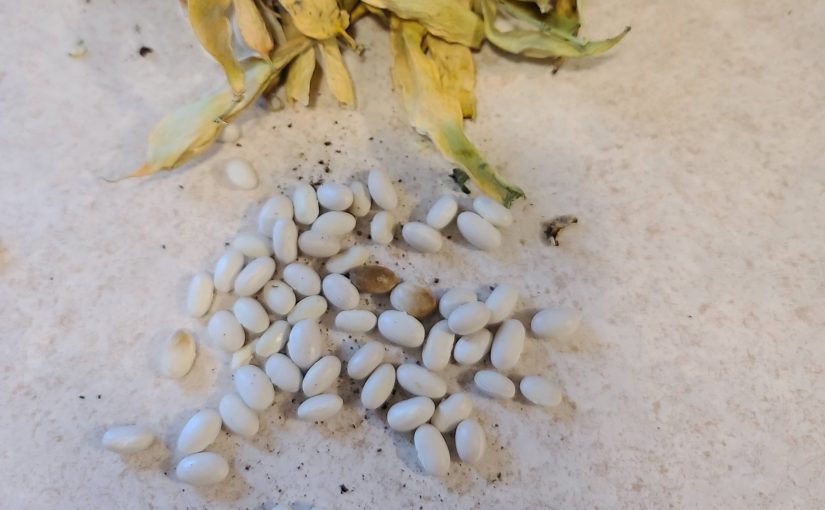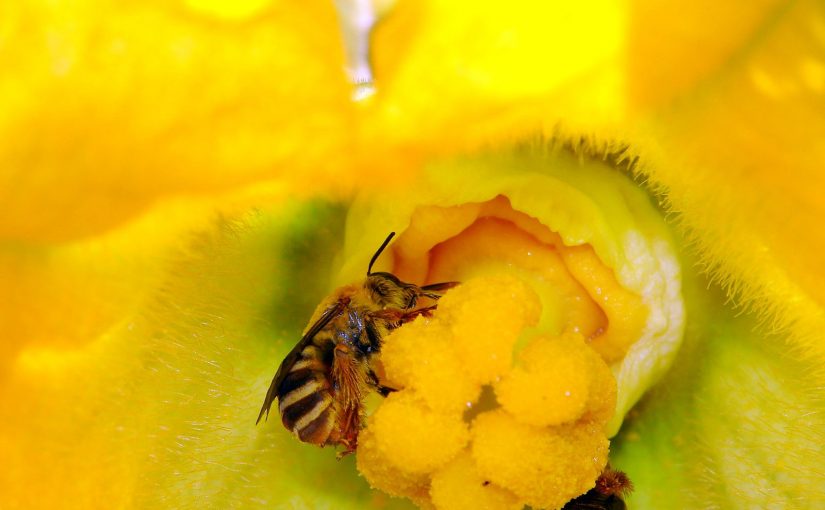As summer winds down and the summer crops and flowers start to slow down many gardeners start thinking about saving seeds. Who doesn’t love saving seeds from that favorite tomato or beautiful coneflower? Not only do you have some for next year, but you can also share with your friends! There are definitely some things to consider and some myths out there when it comes to seed saving, so let’s talk about how to do it right.
You’ll get the most consistent results from open pollinated or heirloom varieties that are self-pollinating. These plants have genetics stable enough that the seeds you save will come out looking and acting like a close approximation to the plants from the previous season (with some variation based on your selection of the “best” plants you save seeds from. Self-pollinating species are: tomatoes, peppers, eggplant, beans, peas, peanuts (note, peppers and eggplants have more open floral structures that can be cross pollinated). Most tree fruits like apples and pears are cross pollinated and they are notorious for not “breeding true” – even if you hand pollinate to ensure that the mother and father are both the same cultivar you’re likely to get surprises. Stone fruits (peaches, plums, etc) are less variable but still not true-breeding. Bee pollinated plants are also notoriously hard to save seed from, since they can cross pollinate with different varieties and cultivars from miles away. It is especially interesting for plants that look totally different but are the same species (like pumpkin and zucchini).
Myth: You can’t save seeds from those new modified hybrid plants. They’ve been made to be sterile
First off, hybrids aren’t genetically engineered and there are no GE plants available to home gardeners (most home garden crops don’t even have GE versions). Hybrid plants do in fact usually produce viable seeds. However, you won’t get the consistent results you will with open pollinated/hybrid varieties. Hybrids are the F1 generation of a specific cross between a mother and father plant. The offspring from that F1 generation (the plants from the seeds you save) is called the F2 generation will be a mix of traits – some will look like the F1 generation, some will look like the mother, some the father, and some the milkman. So you’ll be in for a mixed bag of surprises. According to our former GP colleague Joseph Tychonievich’s book “Plant Breeding for Home Gardeners” you can even develop a stable open pollinated variety from hybrids by saving seeds over a few seasons, selecting seeds from the plants that most resemble the cultivar you’re trying to save.
You’ll want to make sure that the fruit/flower head that you’re saving seed from is mature. This can be tricky for some vegetables, because we eat them in their immature states. Peppers need to change from green to whatever their color is (red, yellow, orange, purple, etc), cucumbers and zucchini (and other squash) need to turn into those massive, bloated fruits that often change to yellow or orange. Beans often need to change to yellow or tan (and may have stripes). For flowers, the seed heads or fruiting structures often need to turn brown and dry or start to open.
If the weather cooperates, you’ll want to collect seeds from dry fruits/structured (beans, some flowers, etc) before significant rainfall so that seeds don’t become wet and potentially mold or break dormancy. Collect seeds and place in a warm, dry location to let them continue drying out (if they’re small you want to put them somewhere they won’t blow away). After drying, store seeds in envelopes or containers and put them in a cool dry place. I often tell people to store seeds in the freezer – the cold temperature slows down respiration in the seeds and can extend their lifespan (the fridge is too moist/humid). If you do that, drop your envelopes or containers down into a sealable container or bag to help keep condensation minimal when you pull them out of the freezer next year.
For home gardeners, it may not matter that you get plants next year that exactly copy the ones you saved seeds from – the fun can be in the surprise. Who knows, you may discover a new variety – at least one that is exciting to you. It can be fun seeing the variation in your new plants and finding something that you love.
Epilogue: A special case – tomatoes
Most of the vegetable crops we grow don’t need any special treatment to break their dormancy (you’ll have to research flowers on a case-by-case basis) – save the seed and plant it next year and it will pop up. Tomatoes are a bit of a special case. If you scrape the seeds out of the fruit you’ll notice they’re still covered with the “goo” from inside the tomato which is called interlocular fluid (interlocular = between seeds). The coating persists on the seed even if you wash them. It has long been held that this coating retains some of the hormones of the fruit (like abscisic acid) that inhibits germination (though not all experts agree). So many sources will tell you to go through some process to break down the coating left on the seed, most commonly by placing the seeds and associated goo in a container, adding a bit of water, and letting them ferment for a few days. You can dump them out and wash off all the gunk. Whether or not this is required to break dormancy is up for debate, but it does provide you with clean seeds that you can store easily. There is also some evidence to suggest that this fermentation process helps remove pathogens on the exterior of the seed (heat treatment can help remove interior pathogens as well).
Some people just scoop out the seeds and smear the goo on a paper towel and try to scrape them off next year. Some people add the step of washing, but this will still not remove all of the goo coating the seeds. This works if you’re not trying to share (or sell seeds) since they will stick to the paper towel. My guess is that the in the day or so that it takes for the goo to dry there is enough fermentation or decomposition going on to break dormancy. If you don’t want the seeds stuck to a paper towel, you can use wax paper or some other non-binding surface, but you’ll still have dried goo on your seeds.






